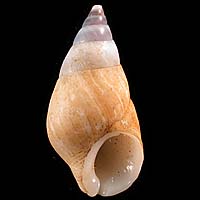|
< Previous family introduction |
|
|||||
 |
Family Planaxidae Clusterwinks
|
|||||
|
This is a small family of two subfamililes, Planaxinae and Fossarinae. The latter was previously considered a separate family, but was combined with the Planaxidae on the basis of similarity of the animals. The Planaxinae is well studied anatomically, the species are well differentiated, based on a revision by Houbrick (see below). The Fossarinae is less well known and is in need of revision. The Planaxinae is a group of about 20 species that are common on intertidal rocky shores in the tropics and subtropics. They live in a similar habitat to littorinids and have somewhat similar shells, except that they have a wide, shallow anterior canal. They gain their common name of clusterwinks by their habit of clustering together into groups under rocks, although they disperse for feeding when covered by the tide. They feed on microalgae. The extent of the Fossarinae is unclear, with only the Mediterranean species Fossarus ambiguus (Linnaeus, 1758) having been studied in detail (Houbrick, 1990). That species has a brood pouch as in planaxine species, but is probably a hermaphrodite, with animals initially males and converting to females as they grow. Both Planaxinae and Fossarinae animals brood their young, this being one of the characters justifying their amalgamation into a single family. Fertilisation is internal. After fertilisation, the embryos are stored in a brood pouch behind the head of the female, usually up to the veliger stage. They are then released into the plankton as free-swimming veliger larvae. There are five species recorded in this family from NSW - two in the subfamily Planaxinae and three in the subfamily Fossarinae. The classification of the Planaxinae species is firm, being based on anatomical evidence, but only one of the species placed in the Fossarinae - Fossarus sydneyensis - is confidently placed here. The other two species, Halotopada nubila and Larinopsis ostensus, are known from only a few empty shells, their animals have never been studied, and are placed here provisionally for want of an informed opinion on a better placement. Family Reference
Coverage In addition to the illustrated species, one widespread tropical species has been recorded from NSW:
Identification Notes Shell features of the Planaxinae are different to those of the Fossarinae. In the Planaxinae shells are moderately large and heavy, with a broad, shallow anterior canal. In the Fossarinae shells are small, usually with a large body whorl, open umbilicus and strong spiral sculpture (Houbrick, 1990). However, two of the NSW species included here for convenience do not match these shell characters!
|